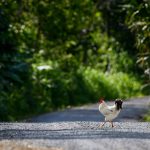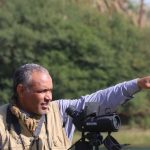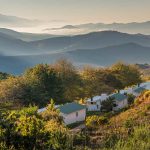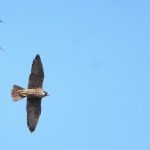
Over the past year, we’ve profiled about 60 bird guides from 35+ countries. Each of them brings unique knowledge of their own local conditions.
Now, while continuing the series as before, we add another format. In this one, instead of one guide answering many questions, many guides answer just one. Hopefully, by putting the same question to many professional birders from around the world, we will see patterns emerge. For our third post in this series, we asked
“What’s one common misconception people have about the birds in your country or region?“
Visitors do not know the distribution of species and/or migration and timings. Gabor Orban, Hungary/Costa Rica
“It’s mostly desert, so there aren’t many birds.” In fact, Morocco has snowy mountains, cedar forests, lush wetlands, and rich birdlife. Mohamed Bargache, Morocco
Birds as omens of good or bad luck, spiritual messages in calls, exaggerated danger from raptors, underestimating ecological value, or believing all birds migrate. Magada Haily Miriam, Uganda
Many adults in Germany lack species knowledge and fail to recognize even common bird species. Added to this is the trivialization of the animals: “the poor little baby sweet robin” (for an adult robin!), and the urge to feed these wild birds year-round (without any need for them) instead of making their gardens “bird-friendly.” Ecological connections are barely known or even ignored. Rolf Nessing, Germany
Very few people in India understand birding or birdwatching. Even tourism officials know little about it. Dibyendu Ash, Sikkim, India
Feeding wild birds with leftover human food is a “kind act.” In reality, it harms birds. Steven An, China
That caged birds are “protected” and sing because they are happy. Also, that raptors always prey on chickens. Ernesto Reyes Mouriño and Tania Piñeiro, Cuba
Most people think Philippine birding is easy, as it has feeding station birds like most of our neighbors. Irene Dy, Philippines
A common misconception is that people underestimate the diversity and beauty of birds in our region. Many are unaware of their fascinating behaviors, long migratory journeys, and the fact that some species even fly over the Himalayas. Few realize how many migratory birds visit this area each year, making it an incredible hotspot for avian diversity. Rofikul Islam, India
Chinese people eat every bird (it’s true that people in southern China like to eat Yellow-breasted Bunting). Zhang Lin, China
The misconception people have about birds in Tanzania is not the same for all people/ tribes. Some tribes believe that if an owl perches and calls whilst on the roof of the house some one is going to die in that family or village. Some tribes also believe that if a crow hits your head, you die. Furaha Amiri Mbilinyi, Tanzania
Many visitors think Rwanda has only savannah birds like those seen in Akagera National Park. But Rwanda is extremely diverse! In Nyungwe alone, there are over 300 species, including many Albertine Rift endemics such as the Rwenzori Turaco and Red-collared Mountain Babbler. The country’s small size hides an incredible range of habitats — from wetlands to mountain rainforest. Jacques Habimana, Rwanda
A common misconception about the birds in our region is that their diversity and uniqueness are often underestimated. We’re fortunate to have around 50 endemic species here, and in just about eight days, one can observe roughly 250 species, which is remarkable compared to many biomes worldwide. Recent advancements in avian taxonomy and molecular analysis have revealed a trend of splitting species, highlighting subtle yet distinct morphological, vocal, and breeding characteristics. These findings suggest that many of our region’s current polytypic species may soon be recognized as distinct species, showcasing even greater biodiversity than previously thought. Savio Fonseca, Goa, India
“Owls are easy to see”. Instagram makes it look like it is, but no! Samuel Bloch, Finland
Many people think that Bonaire — known as the “Flamingo Island” — is home only to flamingos. However, visiting birders are often delighted to discover the rich variety of bird life we enjoy here every day. Although Bonaire lies in the Caribbean, our avifauna is distinctly South American, offering many unexpected and exciting species for birdwatchers to spot. Susan Davis, Bonaire
Editor Comment: These responses show how easily people misunderstand the birds around them. Luckily, local guides know better and can teach us what is correct.
Photo: Yellow-breasted Bunting












Leave a Comment